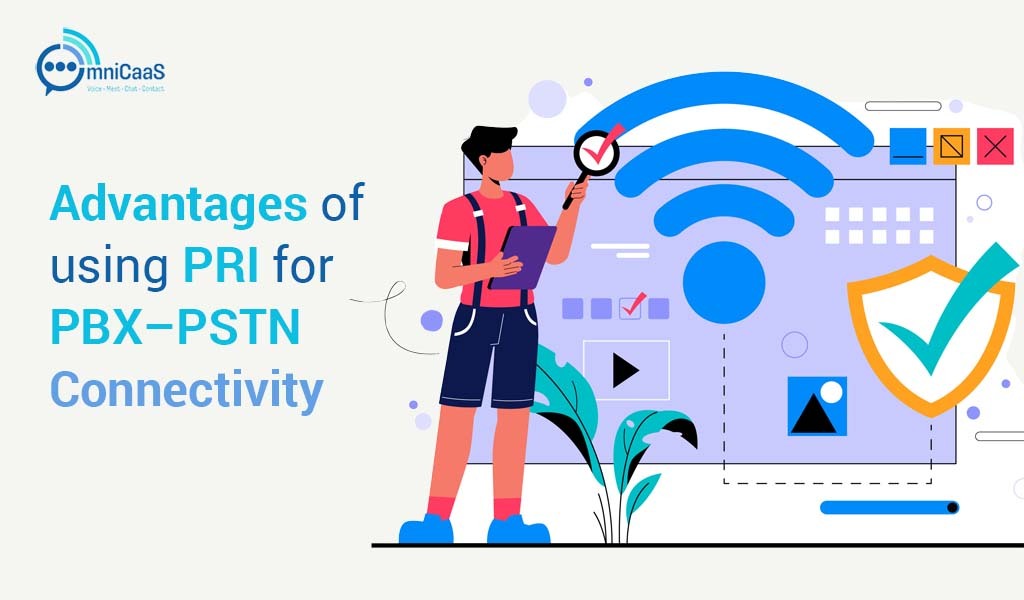
In today’s changing business communication landscape, connection remains the foundation for smooth collaboration and ongoing service delivery.
At the same time, modern organizations are increasingly turning to cloud-based options, such as Business VoIP Service Providers and UCaaS platforms.
Classic technologies, like PRI connections, continue to play an important role, particularly for firms with on-premise systems. Primary Rate Interface (PRI) is a popular way for connecting outdated PBX systems to the public telephone network.
What Is PRI (Primary Rate Interface)?
Primary Rate Interface (PRI) is a telecommunications standard used to deliver multiple voice and data channels over traditional copper or fiber infrastructure. It is part of the Integrated Services Digital Network (ISDN) framework and is designed to connect enterprise communication systems, like a PBX, to the Public Switched Telephone Network (PSTN).
Key features of PRI:
- Offers 23 voice channels and 1 signaling channel (in North America; E1 lines in Europe have 30 channels).
- Supports both voice and data transmission.
- Provides reliable, consistent bandwidth for business-critical communication.
- Enables simultaneous multiple calls using a single line setup.
PRI has been a trusted technology for decades, ensuring high-quality calls, secure connections, and scalability for businesses with high call volumes.
Understanding PBX and PSTN
Before delving into how PRI works in corporate communications, it’s important to understand the two systems it connects: the PBX (Private Branch Exchange) and the PSTN (Public Switched Telephone Network).
These are the fundamental parts of telephony, and understanding them helps businesses understand why a PRI connection is still vital, particularly for firms with complicated communication requirements.
PBX (Private Branch Exchange)
A PBX is simply an organization’s internal phone system that handles both inbound and outgoing calls. It acts as a central hub, routing calls within the organization and connecting them to external networks such as the PSTN.
Key characteristics include:
- Internal Call Management: PBX enables employees to connect without using external lines, which helps reduce costs and streamline communication.
- Routing and Call Handling: It intelligently routes calls based on availability, priority, or preset rules. For example, customer support teams can be automatically connected to the right department without manual intervention.
- Advanced Features: Modern PBX systems include voicemail, automated attendants, call queuing, conferencing, interactive voice response (IVR), and call recording, enhancing efficiency and user experience.
PSTN (Public Switched Telephone Network)
The PSTN is the world’s traditional telephone network, an extensive, globally interconnected system that supports voice communication. It includes analog and digital circuits, cables, switches, and other infrastructure to carry calls over landlines, fiber, or wireless mediums.
Key characteristics include:
- Global Reach: It enables communication between people across cities, countries, and continents.
- Analog and Digital Support: It supports both older analog phone systems and modern digital protocols, ensuring compatibility across generations of technology.
- Call Transmission: Calls are circuit-switched, meaning a dedicated path is established for the duration of the conversation. This ensures consistent call quality, especially for sensitive or mission-critical communications.
- Interconnectivity: PSTN connects businesses, government offices, residential customers, healthcare providers, and more, making it indispensable for sectors where reliable voice communication is essential.
How PRI Bridges PBX and PSTN
A PRI connection acts as a bridge between these two systems, providing a secure, efficient, and reliable interface that allows a business’s internal communication network (PBX) to access external networks (PSTN).
- Seamless Integration: PRI lines integrate seamlessly with existing PBX systems without requiring major infrastructure overhauls.
- Secure and Reliable: Unlike internet-dependent solutions, PRI ensures a dedicated physical connection with minimal downtime, essential for businesses where communication cannot be compromised.
- Efficient Call Handling: With multiple channels available, PRI allows organizations to handle dozens of simultaneous calls, making it perfect for contact centers, legal firms, and customer service operations.
- Compatibility: PRI supports voice, data, and signaling over a unified infrastructure, allowing for both legacy and modern communication needs.
In industries like banking, healthcare, or logistics, where uninterrupted and secure communication is vital, PRI continues to be a trusted solution, even as businesses explore cloud-based alternatives.
Advantages of Using PRI for PBX–PSTN Connectivity
Even as businesses increasingly adopt cloud-based communication platforms like SIP trunking and UCaaS, PRI telephony continues to serve as a trusted and reliable solution for enterprises requiring secure and consistent connectivity. Below are the key advantages of using PRI lines to connect your PBX to PSTN, with each point elaborated to explain its relevance and impact on business communication.

1) High Reliability Ensures Seamless Communication
One of the strongest reasons businesses still rely on PRI is its unparalleled reliability. Unlike internet-dependent solutions, where network congestion or weak Wi-Fi signals can disrupt calls, PRI operates through dedicated lines that guarantee consistent service delivery.
2) Dedicated Bandwidth Supports High Call Volumes
PRI’s architecture is designed to deliver fixed and guaranteed bandwidth, which helps businesses manage large call volumes without impacting the quality or speed of service. As businesses scale, they often face sudden spikes in communication demand. PRI allows enterprises to maintain performance by reserving capacity upfront, enabling customer-facing departments, sales teams, or technical support units to handle large call queues effectively.
3) Enhanced Security Reduces Cyber Risks
In an era where cybersecurity threats are escalating, PRI’s physical infrastructure offers a secure communication channel that’s far less vulnerable than internet-based alternatives. PRI’s direct copper or fiber connection reduces exposure to risks like hacking, spoofing, or phishing attacks. Unlike VoIP systems that depend on internet protocols, PRI’s closed architecture keeps sensitive conversations protected from cyber intrusions.
4) Scalability That Grows with Your Business
Although often perceived as a legacy technology, PRI offers scalability that can adapt to changing business requirements without compromising performance. PRI’s compatibility with legacy systems means that enterprises can expand their communication capabilities without replacing existing hardware. For instance, a manufacturing company can upgrade its call center without overhauling its entire telephony system.
5) Interoperability with Legacy Systems Enables Smooth Integration
PRI’s compatibility with older PBX systems ensures that enterprises can modernize their communication without massive capital investments. Many organizations have long-standing investments in PBX systems that cannot be replaced easily. PRI allows them to integrate new functionalities without discarding costly hardware.
6) Low Latency Provides Real-Time Communication Excellence
Speed is a crucial factor in customer service, healthcare consultations, and mission-critical operations. PRI’s architecture ensures calls are established quickly and maintain natural flow throughout the conversation. The signaling channel in PRI efficiently initiates calls, minimizing the time between dialing and connection. Businesses handling high call volumes benefit from faster interactions, improving customer satisfaction.
PRI vs Other Connection Options
As businesses consider upgrades, it’s essential to compare PRI vs SIP trunking, UCaaS, and other modern solutions.
| Feature | PRI Lines | SIP Trunking | UCaaS |
| Connection Type | Physical | Internet | Cloud |
| Reliability | High | Medium | Depends on internet |
| Cost | Higher | Lower | Subscription-based |
| Scalability | Limited | High | Very high |
| Security | High | Medium | Depends on the provider |
| Maintenance Complexity | Medium | Lower | Low |
| Suitable for Legacy PBX | Yes | No | No |
Future of PRI in Business Telephony
Even though newer communication technologies are reshaping the way businesses interact, PRI telephony still holds relevance in specific contexts. Understanding its evolving role helps organizations make informed decisions about integrating legacy systems with future-ready solutions.
1) PRI’s Continuing Role in Critical Communication
While the shift towards cloud-based services like UCaaS and internet-driven solutions is accelerating, PRI continues to serve organizations that prioritize stability, security, and reliability.
2) PRI in a Hybrid Communication Ecosystem
Rather than being entirely replaced, PRI is increasingly integrated into hybrid communication strategies that blend the stability of traditional telephony with the flexibility of cloud-based services.
3) The Rise of Internet-Based Solutions
Despite PRI’s strengths, the broader industry is moving toward cloud-first, internet-based communication models that offer increased agility and integration possibilities.
While newer technologies like SIP trunking and UCaaS offer flexibility and cost savings, PRI’s consistent performance and proven architecture still make it relevant for certain enterprise environments.
For businesses exploring communication upgrades, it’s essential to consult a Best UCaaS Provider or Business VoIP Service Provider who can help evaluate existing infrastructure and future-proof your operations. At OmniCaaS, we specialize in offering tailored communication solutions – whether you’re integrating PRI, migrating to SIP, or implementing secure cloud-based systems.
Connect with us today to learn how our solutions can ensure reliable, scalable, and secure communication for your business.


Post a Comment